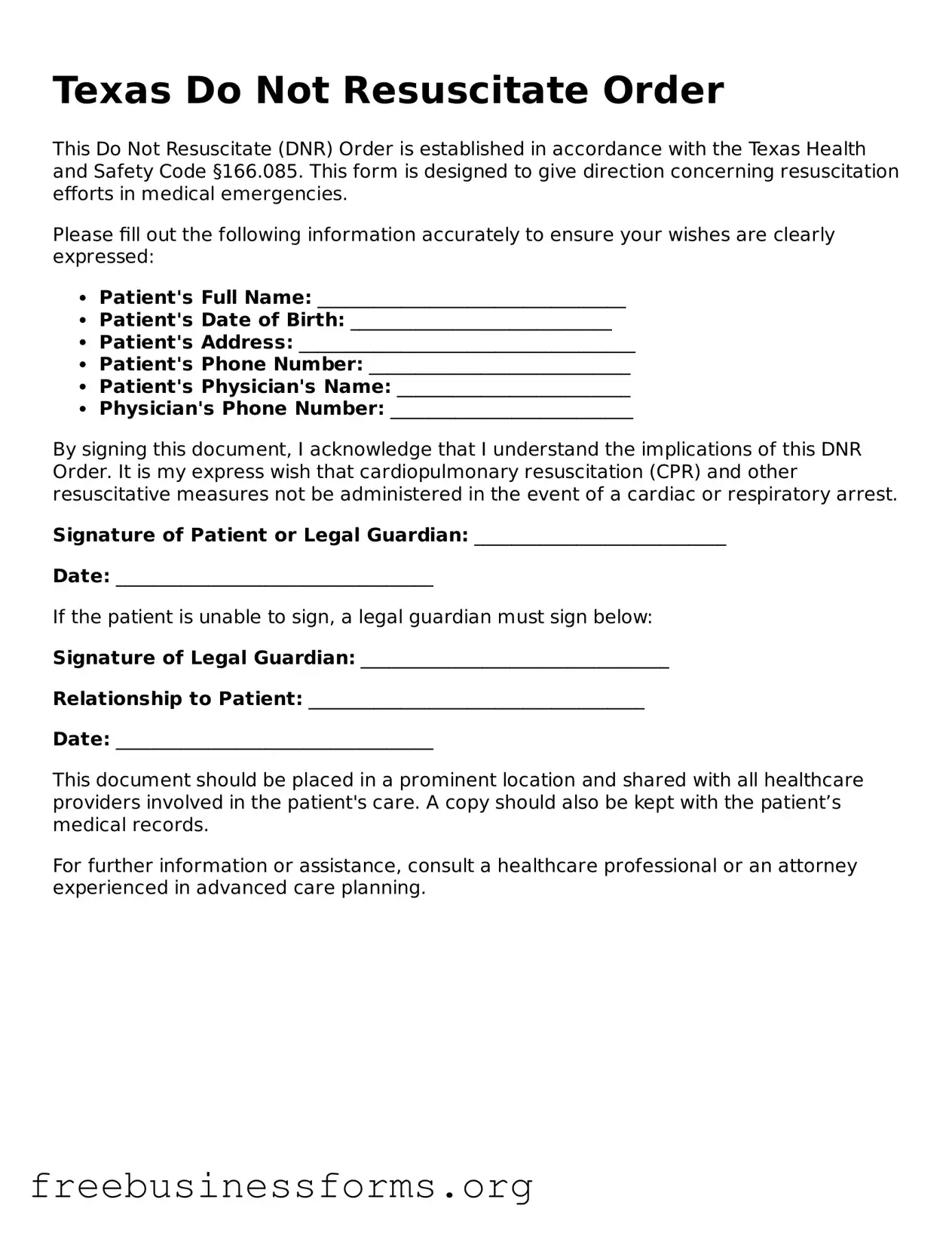Texas Do Not Resuscitate Order
This Do Not Resuscitate (DNR) Order is established in accordance with the Texas Health and Safety Code §166.085. This form is designed to give direction concerning resuscitation efforts in medical emergencies.
Please fill out the following information accurately to ensure your wishes are clearly expressed:
- Patient's Full Name: _________________________________
- Patient's Date of Birth: ____________________________
- Patient's Address: ____________________________________
- Patient's Phone Number: ____________________________
- Patient's Physician's Name: _________________________
- Physician's Phone Number: __________________________
By signing this document, I acknowledge that I understand the implications of this DNR Order. It is my express wish that cardiopulmonary resuscitation (CPR) and other resuscitative measures not be administered in the event of a cardiac or respiratory arrest.
Signature of Patient or Legal Guardian: ___________________________
Date: __________________________________
If the patient is unable to sign, a legal guardian must sign below:
Signature of Legal Guardian: _________________________________
Relationship to Patient: ____________________________________
Date: __________________________________
This document should be placed in a prominent location and shared with all healthcare providers involved in the patient's care. A copy should also be kept with the patient’s medical records.
For further information or assistance, consult a healthcare professional or an attorney experienced in advanced care planning.
